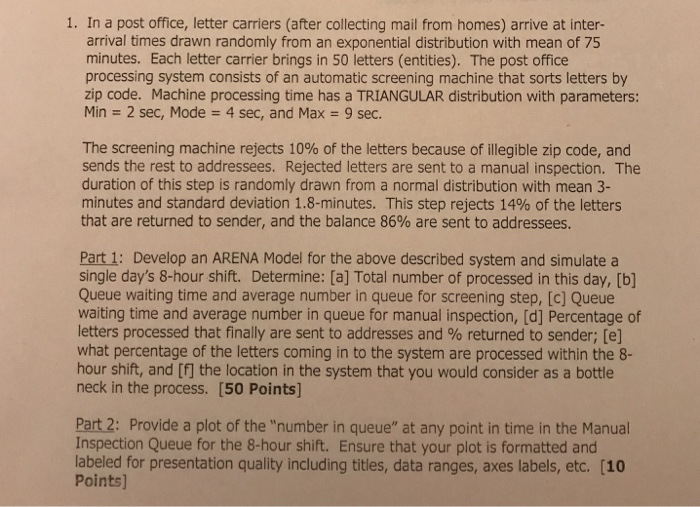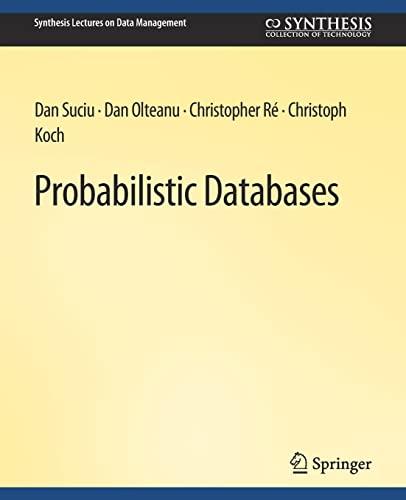1. In a post office, letter carriers (after collecting mail from homes) arrive at inter- arrival times drawn randomly from an exponential distribution with mean of 75 minutes. Each letter carrier brings in 50 letters (entities). The post office processing system consists of an automatic screening machine that sorts letters by zip code. Machine processing time has a TRIANGULAR distribution with parameters: Min 2 sec, Mod 4 sec, and Max 9 sec. The screening machine rejects 10% of the letters because of illegible zip code, and sends the rest to addressees. Rejected letters are sent to a manual inspection. The duration of this step is randomly drawn from a normal distribution with mean 3- minutes and standard deviation 1.8-minutes. This step rejects 14% of the letters that are returned to sender, and the balance 86% are sent to addressees. 9 Part 1: Develop an ARENA Model for the above described system and simulate a single day's 8-hour shift. Determine: [a] Total number of processed in this day, [b] Queue waiting time and average number in queue for screening step, [c] Queue waiting time and average number in queue for manual inspection, [d] Percentage of letters processed that finally are sent to addresses and % returned to sender, [e] what percentage of the letters coming in to the system are processed within the 8- hour shift, and [f] the location in the system that you would consider as a bottle neck in the process. [50 Points] 5 Part 2: Provide a plot of the "number in queue" at any point in time in the Manual Inspection Queue for the 8-hour shift. Ensure that your plot is formatted and labeled for presentation quality including titles, data ranges, axes labels, etc. (10 Points] 1. In a post office, letter carriers (after collecting mail from homes) arrive at inter- arrival times drawn randomly from an exponential distribution with mean of 75 minutes. Each letter carrier brings in 50 letters (entities). The post office processing system consists of an automatic screening machine that sorts letters by zip code. Machine processing time has a TRIANGULAR distribution with parameters: Min 2 sec, Mod 4 sec, and Max 9 sec. The screening machine rejects 10% of the letters because of illegible zip code, and sends the rest to addressees. Rejected letters are sent to a manual inspection. The duration of this step is randomly drawn from a normal distribution with mean 3- minutes and standard deviation 1.8-minutes. This step rejects 14% of the letters that are returned to sender, and the balance 86% are sent to addressees. 9 Part 1: Develop an ARENA Model for the above described system and simulate a single day's 8-hour shift. Determine: [a] Total number of processed in this day, [b] Queue waiting time and average number in queue for screening step, [c] Queue waiting time and average number in queue for manual inspection, [d] Percentage of letters processed that finally are sent to addresses and % returned to sender, [e] what percentage of the letters coming in to the system are processed within the 8- hour shift, and [f] the location in the system that you would consider as a bottle neck in the process. [50 Points] 5 Part 2: Provide a plot of the "number in queue" at any point in time in the Manual Inspection Queue for the 8-hour shift. Ensure that your plot is formatted and labeled for presentation quality including titles, data ranges, axes labels, etc. (10 Points]








